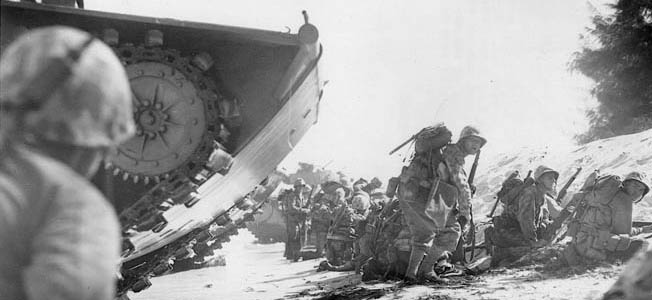Most people have heard of the D-Day Landings in France, but few know there was (almost simultaneously) another set of landings in the Pacific. As with the European campaign, the latter was successful because of men who did not know how to quit.
One of those was Robert Howard McCard who was born on November 25, 1918, in Syracuse, New York. A baseball and football jock in high school, McCard went on to become a bartender at the Bear Mountain Inn in Iona, New York before deciding on a new career path. He joined the Marines in December 1939.
After basic training, he went to Sea School. Then on board the USS Tuscaloosa, he was part of a gun crew that won second place in a five-inch anti-aircraft gun competition. He became a private first class (PFC) in July 1940 and was later made a temporary sergeant in May 1941.
He was then sent to the Central Recruiting District in Centralia, Illinois on the lookout for would-be soldiers until December when America joined WWII. He spent another four months at the Great Lakes Naval Training Station before getting back his rank of PFC at the Training Center in Quantico, Virginia.
McCard was promoted to corporal in January 1943, followed by the rank of sergeant in April. He was then assigned to the 4th Tank Battalion of the 4th Marine Division based at Camp Lejeune, North Carolina. On January 13, 1944, he left the US for the Pacific where he entered history.
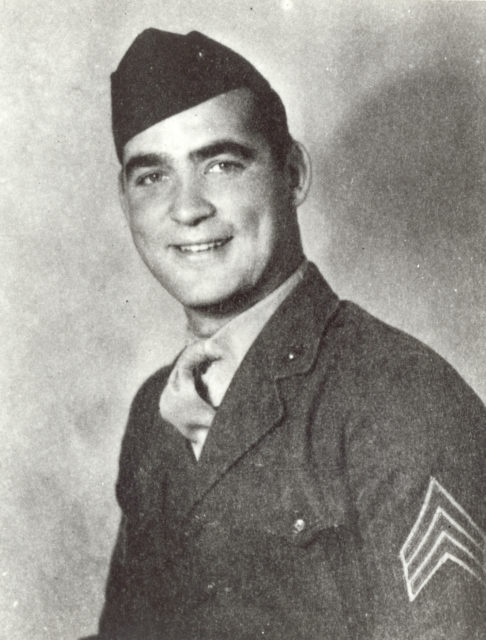
America was fighting the Axis forces in Europe and North Africa, but their war in the Pacific was more personal. The Japanese Empire had attacked Pearl Harbor on December 7, 1941, not because they wanted the US, but because they needed the Philippines – which was US property. America wanted it back.
By the end of 1943, the Allies had taken most of the Solomon Islands, the Gilbert and Marshall Islands, as well as the Papuan Peninsula of New Guinea. Given the distance involved, however, from there, they still could not send aircraft to the Japanese islands.
As part of their Island Hopping Campaign to reach the Philippines and Japan, they decided to bypass the Carolines and Palau and attack the Marianas, Taiwan, and Saipan. It would put them within striking range of the Japanese islands using the new Boeing B-29 Superfortress long-range bombers… if they succeeded in taking them.
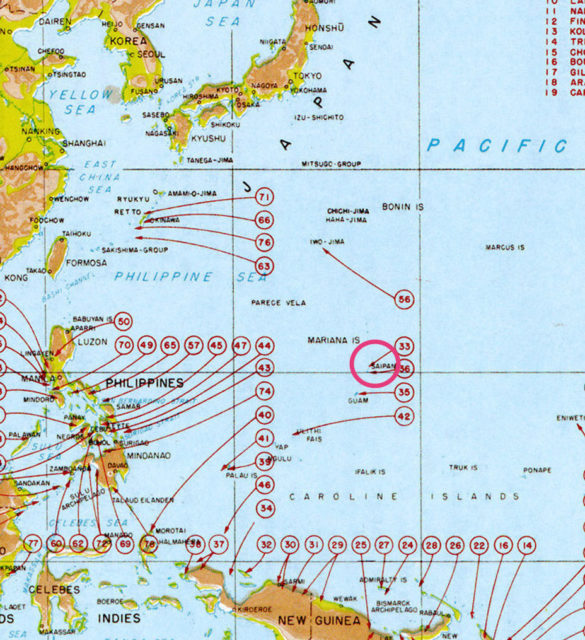
Saipan was especially crucial because of its proximity to the Philippines and Japan. It was also the Japanese administrative center of the Marianas, which was why it was so heavily fortified.
McCard landed at Kwajalein in the Marshall Islands on January 31 and saw combat at the battles of Ennugaret, Ennumennett, and Namur Islands. He earned leave back in Hawaii, though not for long.
On June 5 (the day before the Normandy Landings), McCard set off with the US 2nd Marine Division, the 4th Marine Division, and the Army’s 27th Infantry Division. They were headed for Saipan escorted by the US Navy’s Task Force 58 whose aim was to obliterate the island’s aerial defenses.
They did so on June 11, but it was not just Saipan they bombed. The Japanese airfields at Guam, Tinian, Pagan, and Rota were also attacked, destroying 168 planes. Thanks to aerial reconnaissance, the Americans knew what else they had to target when their main force arrived. Or so they thought.
Operation Tearaway, the capture of Saipan, had begun. If successful, they would launch Operation Forager to take the rest of the Marianas.
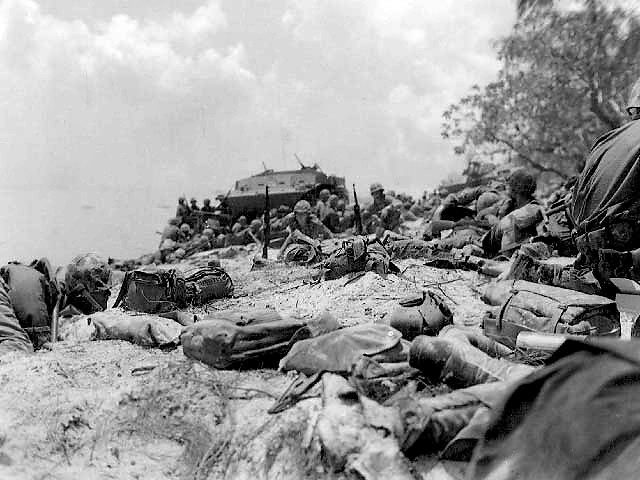
The Japanese were taken completely by surprise. They had counted on being attacked at one of their peripheral territories further south – the most likely being the Caroline Islands.
By June 14, the Americans were pounding Japanese positions on the western beaches of Saipan. They had divided the area into six sections from north to south: two north of the town of Garapan at Black Beach and Scarlet Beach, and four near Chalan Kanoa at Red, Green, Blue, and Yellow Beaches.
The following day, the 2nd and 4th Marine Divisions, made up of almost 71,000 men, stormed the beaches, but it was not easy. Despite aerial reconnaissance, they had severely underestimated the number of Japanese forces on the island – about 32,000 men (excluding some 25,000 civilians).
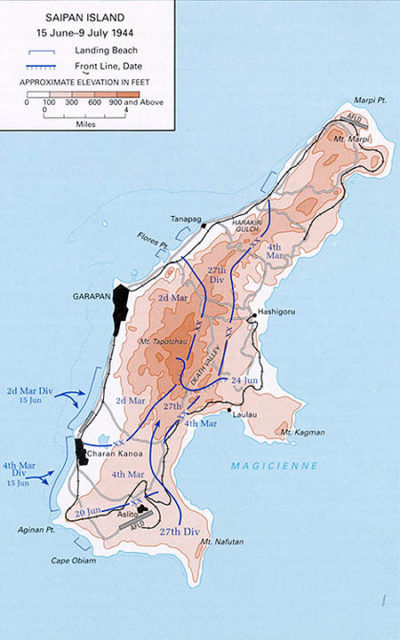
Those who landed at Red, Green and Blue Beaches were to head north to meet up with those at Black and Scarlet Beaches. Those at Blue and Yellow Beaches were to move east toward the Ås Lito Airfield.
On June 16, McCard was both the platoon and gunnery sergeant of Company A. He was headed to the airfield when Japanese 77 mm guns damaged his tank. Fortunately, they had not destroyed his weapons, so he gave them as good as he got until his ammo ran out.
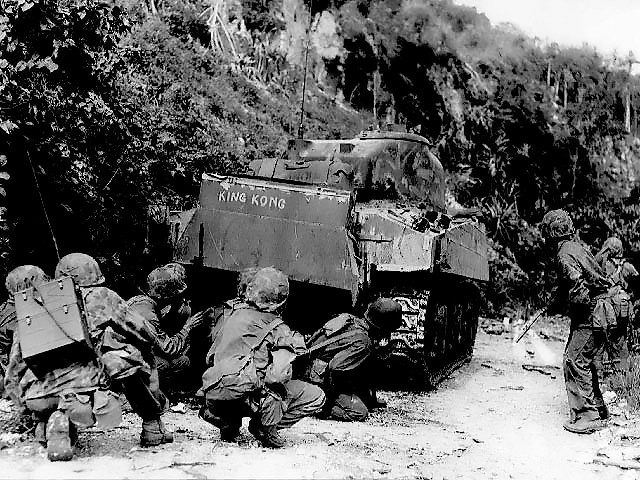
He ordered his crew to escape from the tank and to cover their retreat he lobbed grenades at the Japanese. He had such an adrenaline rush he did not realize he had been hit several times.
He then dismantled a machine gun and again engaged the enemy mowing down 16 Japanese soldiers to ensure the safety of his crew.
The Battle of Saipan ended on July 9 although sporadic fighting continued for several more days as many Japanese chose death over surrender, including civilians.
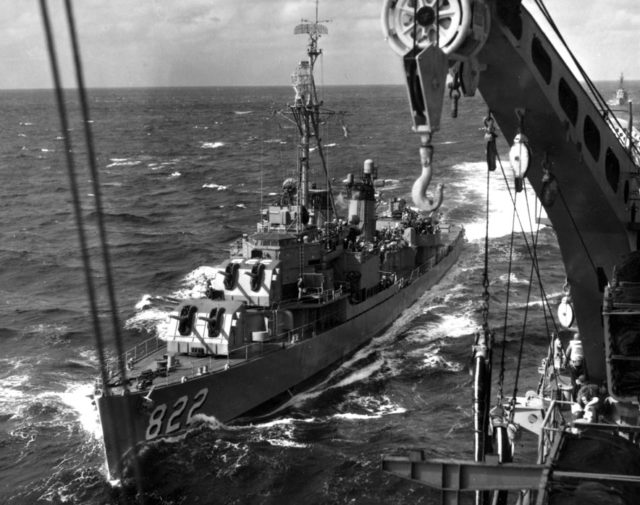
It was the turning point in the war. With bombers able to reach them, Japan’s defeat was inevitable. Even their heavily censored press began preparing the public for the end.
Robert Howard McCard was posthumously awarded a Medal of Honor and had a Gearing-class destroyer named after him.
